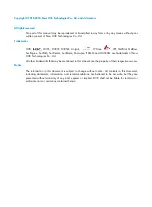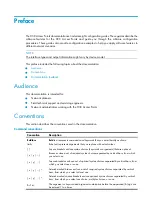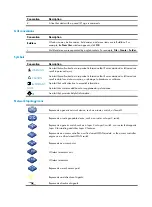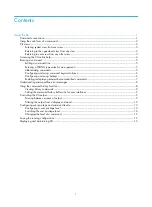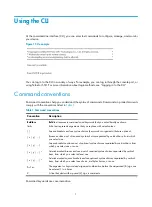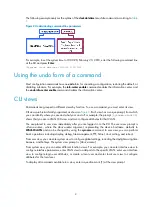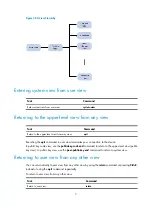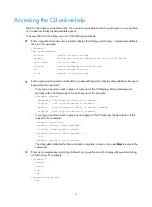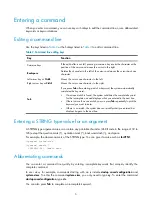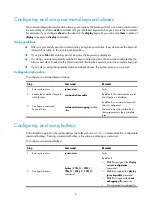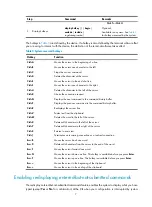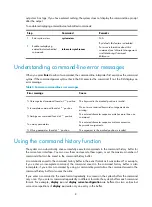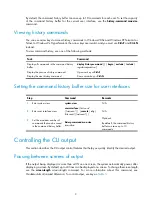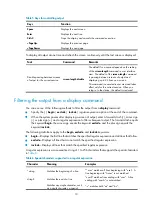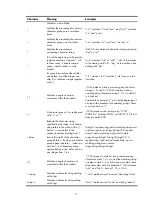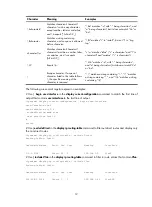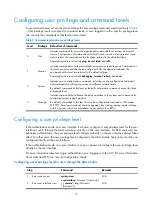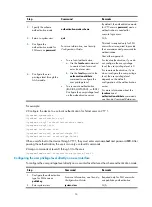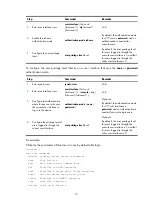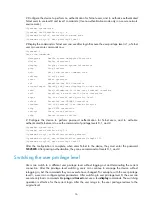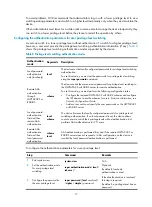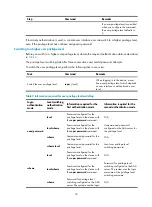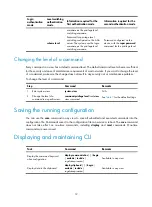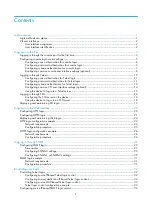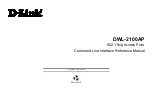
6
Configuring and using command keyword aliases
The command keyword alias function allows you to replace the first keyword of a non-undo command or
the second keyword of an
undo
command with your preferred keyword when you execute the command.
For example, if you configure
show
as the alias for the
display
keyword, you can enter
show
in place of
display
to execute a
display
command.
Usage guidelines
•
After you successfully execute a command by using a keyword alias, the system saves the keyword,
instead of its alias, to the running configuration.
•
If you press
Tab
after entering part of an alias, the keyword is displayed.
•
If a string you entered partially matches a keyword and an alias, the command indicated by the
alias is executed. To execute the command indicated by the keyword, enter the complete keyword.
•
If you enter a string that partially matches multiple aliases, the system gives you a prompt.
Configuration procedure
To configure a command keyword alias:
Step Command
Remarks
1.
Enter system view.
system-view
N/A
2.
Enable the command keyword
alias function.
command-alias enable
By default, the command keyword
alias function is disabled.
3.
Configure a command
keyword alias.
command-alias mapping
cmdkey
alias
By default, no command keyword
alias is configured.
You must enter the
cmdkey
and
alias
arguments in their complete
form.
Configuring and using hotkeys
To facilitate CLI operation, the system defines the hotkeys shown in
and provides five configurable
command hotkeys. Pressing a command hotkey is the same as entering a command.
To configure a command hotkey:
Step Command
Remarks
1.
Enter system view.
system-view
N/A
2.
Configure hotkeys.
hotkey
{
CTRL_G
|
CTRL_L
|
CTRL_O
|
CTRL_T
|
CTRL_U
}
command
By default:
•
Ctrl+G
is assigned the
display
current-configuration
command.
•
Ctrl+L
is assigned the
display
ip routing-table
command.
•
Ctrl+O
is assigned the
undo
debugging all
command.
•
No command is assigned to


